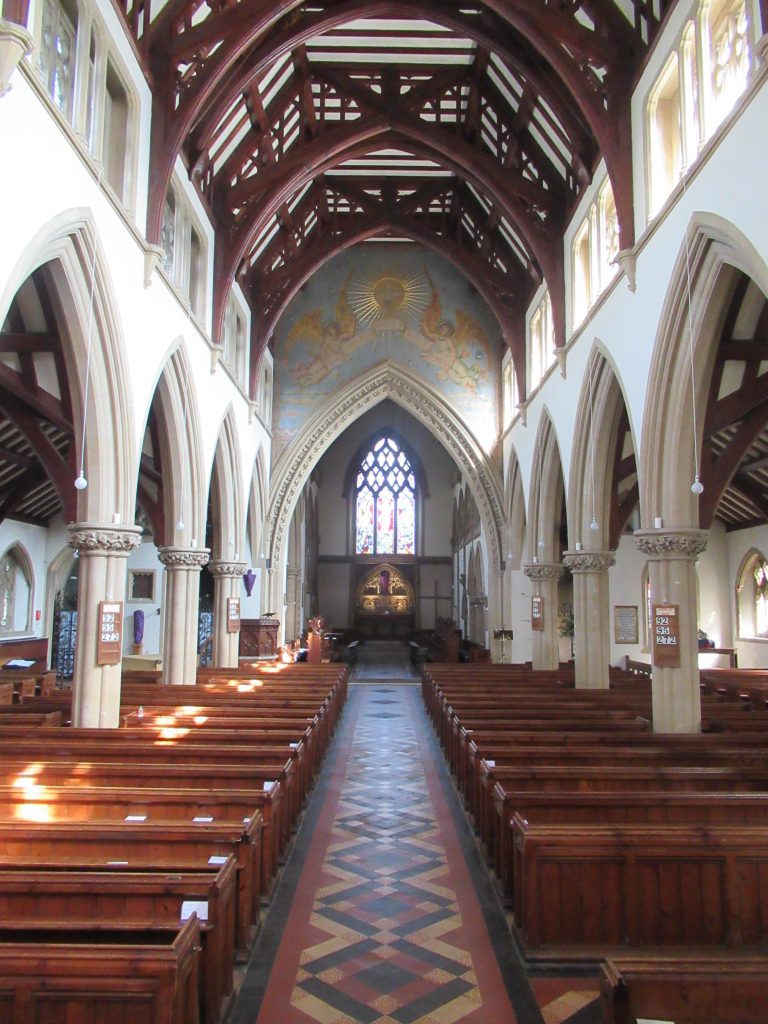Church History

There is little doubt that there has been human settlement in the area around Wokingham for at least two thousand years. The Romans built a main road from Silchester to Staines through the area and in Saxon times the powerful tribe called the Woccingas, probably based in Woking, occupied the area and at some point gave their name to Wokingham. No mention is made of such a place in the Domesday Book, but when it does first emerge as a specific name in the historical record, in 1146, it is as a minor chaplaincy attached to the parish of Sonning. It was around 1190 that the Wokingham chapel was first dedicated to All Saints. It was later to become the Parish Church of the town.
At the census of 1861, the population of Wokingham was 4144 and a great deal of development was going on in the area. The railway had arrived; the line from Guildford to Reading had been built in 184~, and the direct line to London via Staines had followed in 1856. The Town Hall was opened in 1860, the same year as the Baptist Church had been re- built. There was also a Primitive Methodist Chapel in the town, and much restoration of All Saints Church was in progress. At this time, John Walter, living at Bearwood was at the height of his industrious powers and prosperity. He had inherited the Times newspaper from his father at the latter’s death in 1847, as well as the country house at Bearwood. By 1860 he was extending his estate, buying land in much of the Arborfield, Wokingham and Sandhurst area. He pulled down the old Bearwood house and built the present mansion with its extensive grounds and large ornamental lake. As well as his penchant for building, he had a strong religious instinct. He had been very much influenced by the ideas of the Oxford Movement when he was at the University in the 1830s. This, coupled with his father’s building of St Catherine’s Church at Bearwood in 1846, lay at the root of his subsequent church building work.
St Paul’s Church was built by John Walter, entirely at his own expense, during the period 1862-1864. It was consecrated by Bishop Samuel Wilberforce, Bishop of Oxford, on 23rd July 1864. For various reasons the original church building was not entirely satisfactory and within ten years it was found necessary to enlarge the church by the addition of the North and South Aisles. At the same time the acoustics of the building were improved by the construction of a new roof. Almost all of the basic fabric of the church therefore dates from the middle of Queen Victoria’s reign, and is a product of that one period. When it was built it was described as being ‘in the Decorated style of the 14th and 15th centuries’. Today it is probably most readily labelled as ‘decorated Victorian Gothic’.
The architect of the church was Henry Woodyer of Grafham, near Guildford who, while not being one of the most outstanding names in Victorian architecture, is generally considered to have a high reputation. He was one of those who, under the influence of the Oxford Movement, used decorated detail in the Gothic style as an appropriate offering to the glory of God, in contrast to the prevailing industrial architecture of the day much of it of superb engineering quality, but essentially built as a monument to Man’s achievements. John Walter’s personal interest in the Oxford Movement must have influenced him in his choice of architect. The late John Betjeman wrote about Woodyer with approval, quoting St Paul’s, Wokingham as a good example of his work. Among the most interesting ornaments in the church is the Stained Glass Windows representing scenes from the life of St Paul, by Hardman of Birmingham. Also the organ, built by Willis, and the peal of eight bells, made by Warner, are notable. The principal dates in the history of the church are:
- 1862 Foundation stone laid
- 1864 Consecration of the church and churchyard
- 1874 Enlargement of the church, by the addition of the north and south aisles, and new roof
- 1892 The vestry enlarged to its present size
- 1938 The original Walter family pew converted to the present Walter Chapel
- 1950 The Lady Chapel in the north aisle was established
- 1951 The churchyard extension was consecrated.
